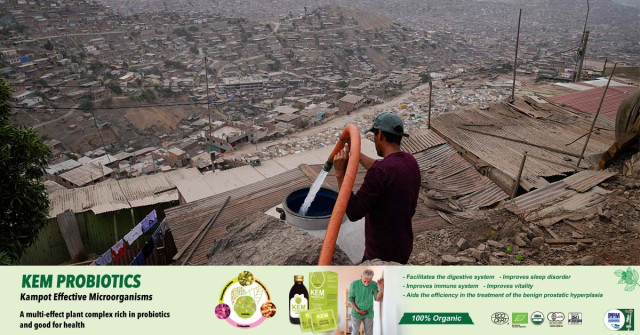Water, Abundant for Some and Scarce for Others, Highlights Inequalities of Climate Change

- By Associated Press (AP)
- March 23, 2024 9:20 AM
In Soweto, South Africa, residents queue up for fresh water. In a favela in Rio de Janeiro, residents collect it from a naturally-occurring small stream. And in Guwahatai, India, residents collect water from an open drain, filling buckets to the brim.
Fresh water is central to the lives of everyone, but for some, clean and consistent water sources are harder to come by. This World Water Day, Associated Press photographers around the world captured both the lengths that some people must go to source water and the relative ease for others.
Only around 3% of Earth's surface is covered in fresh water, and much of that is locked up in ice or soil, but the sources that humans and animals draw from are plentiful and varied.
The Ohio River is not just a means of water but of transportation, as ferries shuttle across transporting goods between its banks. In Milan, Italy, the precious resource isn't taken for granted, as utilities expel the bacteria from wastewater, making the water safe for agriculture. And in Colombia, the Chingaza lagoon serves as the primary water source for millions of residents.
But as the world warms from human-caused climate change and environmental concerns like waste impact waterways, the availability of the world's most precious resource is getting increasingly erratic.
In Bangkok, Thailand, garbage clogs the Chao Phraya River, where cranes atop boats help collect waste and clear waterways. In Jakarta, Indonesia, canals are littered with plastic bags and bottles that bob on the surface. And on the exposed banks of the Miguel Aleman dam in Valle de Bravo, Mexico, the ground is so dry from drought and heat that it's deeply cracked, starved of rain.
The United Nations estimates that around 2.2 billion people worldwide don’t have access to safely managed drinking water.
For many, that means working hard to get what they need. Like in Makueni County, Kenya, where residents scoop water that's accumulated in the sand during rainy season to keep them going during the dry parts of the year. Or in Lima, Peru, where getting enough water means residents need to make sure their tank is always filled up, with provisions given to them by the government. And in California, having enough water after a well dries up means waiting for water tankers for weekly state rations, and asking neighbors when that runs out.
Even the most pristine-looking sources, like a forest lake near Frankfurt, Germany, aren't immune to the challenges posed by climate and environmental crises, as a warming world causes tumult across the globe.















